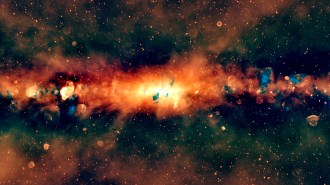Sifting through archival images, astronomers have identified the star whose explosive demise was recorded by telescopes last year. It’s the third time scientists have observed what a particular star looked like before it was blown to smithereens and the first time that they’ve uncovered the origin of the most common type of supernova. The discovery confirms the accepted theory that type II supernovas are produced when elderly, bloated stars known as red supergiants run out of nuclear fuel and collapse.

A team led by Stephen Smartt of the University of Cambridge in England describes the find in the Jan. 23 Science.
The researchers began their search for archived images of the star last June, after an amateur astronomer, using a backyard telescope, found a supernova in the galaxy M74, about 30 million light-years from Earth. As luck would have it, both the Hubble Space Telescope and the Gemini North Telescope on Hawaii’s Mauna Kea had imaged the original star less than a year before the supernova find. The images reveal that the red supergiant star was about 8 times as massive as the sun, which is near the low end of what theory predicts for the mass of stars that can flame out in a supernova.
Previous archive searches for images of stars that ended their lives as supernovas have rarely met with success. That’s because no star has gone supernova in our own galaxy for several hundred years, and more-distant stars in other galaxies weren’t clearly imaged until recent years.







